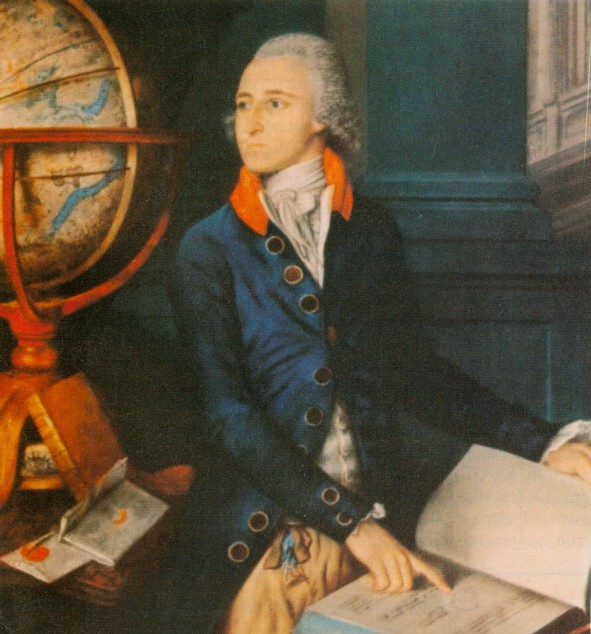- John Goodricke
Infobox Scientist
name = PAGENAME
box_width =
image_width = 150px
caption = PAGENAME
birth_date =September 17 1764
birth_place = Groningen
death_date =April 20 1786
death_place =
residence =
citizenship =
nationality =Netherlands
ethnicity =
field =Astronomy
work_institutions =
alma_mater =
doctoral_advisor =
doctoral_students =
known_for =
author_abbrev_bot =
author_abbrev_zoo =
influences =
influenced =
prizes =Copley Medal
religion =
footnotes =John Goodricke FRS (
September 17 1764 –April 20 1786 ) was an eminent and profoundlydeaf amateurastronomer . He is best known for his observations of thevariable star Algol (Beta Persei) in 1782. (In this context, 'variable' means that the star changes in brightness.)Life and work
John Goodricke, named after his grandfather Sir John Goodricke, was born in Groningen in the
Netherlands , but lived most of his life inEngland . He was profoundlydeaf through most of his life, due toscarlet fever in early childhood. His parents sent him to Thomas Braidwood's Academy, a school for the deaf inEdinburgh , and in 1778 to theWarrington Academy .After leaving Warrington, Goodricke returned to live with his parents in
York . There, he became friends withEdward Pigott , whose fatherNathaniel Pigott had built a sophisticated privateobservatory . Edward was already interested in variable stars, and he gave Goodricke a list of those that he thought were worthy of observation.Although several stars were already known to vary in
apparent magnitude , Goodricke was the first to propose a mechanism to account for this. He suggested that Algol is what is now known as aneclipsing binary . He presented his findings to theRoyal Society in May 1783, and for this work, the Society awarded him theCopley Medal for that year. He was elected a Fellow of the Royal Society onApril 16 1786 . He never learned of this honour however, as he died four days later, probably frompneumonia . He never married.Goodricke in Yorkshire
Goodricke was buried at Hunsingore Church in
Yorkshire , along with many of his relatives. [cite journal | author = Goodricke, C. A. | title = Letter accompanying the gift to the Society of a portrait of John Goodricke | journal = Monthly Notices of the Royal Astronomical Society | year = 1912 | volume = 73 | issue = 11 | pages = 3 – 4 | url = http://adsabs.harvard.edu/abs/1912MNRAS..73....3G ]Today there is a marker in York near the site of John Goodricke's observatory.
Between October 2005 and March 2006 Sean Ellingham and James Valner from the
University of York undertook a project to find the position of Goodricke's observatory using the data he recorded. A 1949 study by Sidney Melmore [cite journal | author = Melmore, Sydney | title = The Site of John Goodricke's Observatory | journal = The Observatory | year = 1949 | volume = 65 | issue = | pages = 95 – 99 | url = http://adsabs.harvard.edu/abs/1949Obs....69...95M ] had shown that Goodricke worked from the Treasurer's House (now owned by the National Trust) very nearYork Minster . By re-creating Goodricke's observations, the two York students were able to conclude that he had observed from the eastern-most window of the second floor, looking south towards the Minster.Goodricke College at theUniversity of York is named after Goodricke. There is also a modern sculpture named "Algol" in the grounds.References
Further reading
*
*
*
*
*
External links
*- Features animations of different types of variable stars.
*
Wikimedia Foundation. 2010.
